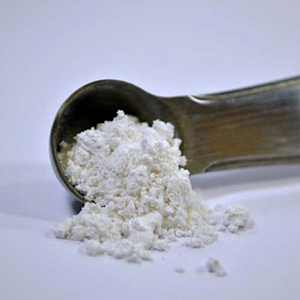Carnosine is concentrated in muscles when they are working, and is found in the heart, brain, and many other parts of the body. Carnosine is used to prevent aging and for preventing or treating complications of diabetes such as nerve damage, eye disorders (cataracts), and kidney problems(1). Carnosine is abundant in protein-rich foods. The best food sources are beef, poultry and pork products, but milk, eggs and cheese are also good sources of carnosine.
While evidence from animal studies supports the role for carnosine in the prevention and treatment of obesity, insulin resistance, type 2 diabetes and cardiovascular disease, there is limited human data(6). Carnosine supplementation may be an effective strategy for prevention of type 2 diabetes(2), increase survivability of neurons and liver cells to restriction in blood supply (ischemia) by scavenging of reactive oxygen species(3), and act as a natural inhibitor of vasoconstriction and a subsequent increase in blood pressure(4). Carnosine reduced kidney activity and excessive protein in urine in diabetic mice(5).
Oxidative stress and inflammation play a critical part in progression of many diseases, including kidney and heart diseases. Hypertension, endothelial (cells lining the interior surface of blood and lymphatic vessels) dysfunction, shortened red blood cell (RBC) lifespan, and nitric oxide (NO) dysfunction are complications of oxidative stress(7). Carnosine is a scavenger of hydroxyl and superoxide radicals in skeletal muscles and the brain (where it is thought to act as a biological antioxidant)(7).
Hemorheology is the study of flow properties of blood and its elements of plasma and cells. Blood flow, deformability, and aggregability of RBCs are the main components of hemorheology. In large blood vessels, a basic component is the flow. In microcirculation, where cells must deform to pass through narrow capillaries, deformability and aggregation of RBCs are the major determinants of resistance to flow. The ability of the entire RBC to deform is of crucial importance for performing its function in oxygen delivery and is a determinant of cell survival time in the circulation. Impaired RBC deformability is thought to be due to increased oxidative stress. Oxidative stress may decrease RBC aggregation. In CKD rats, malondialdehyde (MDA) levels were increased, and NO and RBC deformability were decreased compared to controls. Carnosine treatment reduced oxidative stress as observed decreased MDA levels, improved RBC (red blood cell) ability to deform, and increased NO levels(7).
Carnosine may also affect the ability of cells to reproduce and thus the aging process. As we get older, our cells lose the ability to reproduce effectively (cellular senescence). Studies have shown that L-carnosine can affect the ATP and Reactive Oxygen Species (ROS) production and may inhibit the proliferation of human colorectal carcinoma(8), (9). Cellular ATP concentrations can effect energy metabolism. Carnosine may reduce the formation of altered proteins and enhance breakdown of aberrant polypeptides is indicative of its influence on proteostasis (a relatively stable equilibrium of proteins). Therefore, carnosine may be a treatment or prevention of diverse age-related conditions where energy metabolism or proteostasis are compromised. These include cancer, Alzheimer's disease, Parkinson's disease and the complications of type-2 diabetes (nephropathy, cataracts, stroke and pain)(10).
General:
1)WebMD. Find a Vitamin or Supplement: CAROSINE. 2005-2016. http://www.webmd.com/vitamins-supplements/ingredientmono-1038-Carnosine.aspx?activeIngredientId=1038&activeIngredientName=Carnosine&source=1
6)de Courten B, Kurdiova T, de Courten MP, Belan V, Everaert I, Vician M, Teede H, Gasperikova D, Aldini G, Derave W, Ukropec J. Muscle carnosine is associated with cardiometabolic risk factors in humans. PloS one. 2015 Oct 6;10(10):e0138707. http://journals.plos.org/plosone/article?id=10.1371/journal.pone.0138707
10)Hipkiss AR. Possible benefit of dietary carnosine towards depressive disorders. Aging and disease. 2015 Sep;6(5):300. http://www.ncbi.nlm.nih.gov/pmc/articles/PMC4567213/
Diabetes:
2)de Courten B, Jakubova M, de Courten MP, Kukurova IJ, Vallova S, Krumpolec P, Valkovic L, Kurdiova T, Garzon D, Barbaresi S, Teede HJ. Effects of carnosine supplementation on glucose metabolism: Pilot clinical trial. Obesity. 2016 May 1;24(5):1027-34. https://www.researchgate.net/profile/Barbora_De_Courten2/publication/299656521_Effects_of_Carnosine_Supplementation_on_Glucose_Metabolism_Pilot_Clinical_Trial/links/570760b608aeda83af5384b4.pdf
5)Peters V, Schmitt CP, Zschocke J, Gross ML, Brismar K, Forsberg E. Carnosine treatment largely prevents alterations of renal carnosine metabolism in diabetic mice. Amino acids. 2012 Jun 1;42(6):2411-6. http://www.academia.edu/download/45832703/s00726-011-1046-420160521-5191-13u8pp5.pdf
Liver:
3)Mozdzan M, Szemraj J, Rysz J, Nowak D. Antioxidant Properties of Carnosine Re‐Evaluated with Oxidizing Systems Involving Iron and Copper Ions. Basic & clinical pharmacology & toxicology. 2005 May 1;96(5):352-60. http://onlinelibrary.wiley.com/doi/10.1111/j.1742-7843.2005.pto_03.x/full
Antioxidant:
4)Hou WC, Chen HJ, Lin YH. Antioxidant peptides with angiotensin converting enzyme inhibitory activities and applications for angiotensin converting enzyme purification. Journal of agricultural and food chemistry. 2003 Mar 12;51(6):1706-9.
7)Yapislar H, Taskin E. L-carnosine alters some hemorheologic and lipid peroxidation parameters in nephrectomized rats. Medical science monitor: international medical journal of experimental and clinical research. 2014;20:399. https://www.ncbi.nlm.nih.gov/pmc/articles/PMC3958568/
Cancer:
8)Iovine B, Oliviero G, Garofalo M, Orefice M, Nocella F, Borbone N, Piccialli V, Centore R, Mazzone M, Piccialli G, Bevilacqua MA. The anti-proliferative effect of L-carnosine correlates with a decreased expression of hypoxia inducible factor 1 alpha in human colon cancer cells. PloS one. 2014 May 7;9(5):e96755. http://journals.plos.org/plosone/article?id=10.1371/journal.pone.0096755
9)Iovine B, Guardia F, Irace C, Bevilacqua MA. l-carnosine dipeptide overcomes acquired resistance to 5-fluorouracil in HT29 human colon cancer cells via downregulation of HIF1-alpha and induction of apoptosis. Biochimie. 2016 Aug 31;127:196-204. https://www.researchgate.net/profile/Maria_Bevilacqua/publication/303510481_L-carnosine_dipeptide_overcomes_acquired_resistance_to_5-fluorouracil_in_HT29_human_colon_cancer_cells_via_downregulation_of_HIF1-alpha_and_induction_of_apoptosis/links/5771486a08ae6219474a474b.pdf
